Angela Houston is a certified Athletic Therapist who is in the process of completing her thesis to become an Osteopathic Manual Practitioner. Angela is also the founder of Rhiza Health.
We asked Angela to tell us more about osteopathy and in particular to help us understand the connection between our spiritual and physical health.
WEHL: What is Osteopathy?
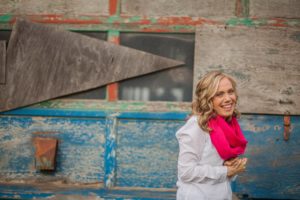 AH: Osteopathy is a client-centered discipline based on understanding the relationship between structure and function in order to enhance the body’s inherent ability to heal. Osteopathic Manual Practitioners work to find and remove restrictions so that the body is able to run the way it is supposed to. Restrictions don’t just come from an injury, but perhaps from sitting at a computer all day or from gravity as we age. When we take away restrictions (that can eventually turn into pain and injuries) the body is able to adapt and function more optimally; instead of running like a sedan it can function more like a sports car!
AH: Osteopathy is a client-centered discipline based on understanding the relationship between structure and function in order to enhance the body’s inherent ability to heal. Osteopathic Manual Practitioners work to find and remove restrictions so that the body is able to run the way it is supposed to. Restrictions don’t just come from an injury, but perhaps from sitting at a computer all day or from gravity as we age. When we take away restrictions (that can eventually turn into pain and injuries) the body is able to adapt and function more optimally; instead of running like a sedan it can function more like a sports car!
Osteopathy sessions are one hundred percent hands-on and involve cranio-sacral work, visceral releasing, treating the ligaments and restoring mobility around organs, muscles and joints. Osteopaths don’t just focus on the symptom but rather look to find the cause of the dysfunction. We focus on the cause of the problem, free that area and like a domino effect this leads to full functioning, full restoration, full circulation and the body starts to heal as it’s intended to.
WEHL: How can Osteopathic treatment help us improve our wellness?
AH: Instead of waiting until you have an injury to get treated we encourage a more preventative approach. We all have tightness, limited range of motion or wear and tear and if we take a proactive approach to treating at this stage we recover more quickly and may avoid more serious issues.
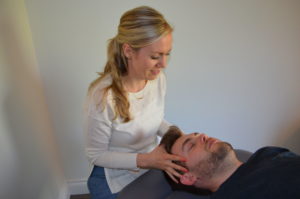 WEHL: As you work with clients what do you notice about the connection between spiritual and physical wellness?
WEHL: As you work with clients what do you notice about the connection between spiritual and physical wellness?
AH: I have found that the bodies of people who are more connected physically and spiritually are more receptive to treatment and tend to heal faster. We hold emotions and stories in different parts of our body and so when we process things going on in our lives, have an epiphany or let something go while being treated (or even after), our physical body can release the correlating physical trauma.
I encourage people that if they are thinking about or processing something during treatment, to not just forget about it, but maybe to talk it through, or to make note of it and see if there is any action required for resolution. Our physical body is affected when we go through difficult things; when people can see this connection they find greater healing/resolution.
WEHL: How do you encourage clients to practice spiritual wellness?
AH: I let them know their health is not just physical, but also how they are spiritually and this looks different for everyone. They may start their day with a quiet walk, or 15 minutes meditating on something they’ve read; doing this personal work will make clients more likely to benefit from treatment sessions.
For many clients, (especially new moms) taking time for them to be treated is part of their wellness. I encourage clients to be aware of their bodies – when they feel tension in an area we are working on, I get them to focus on breathing into the area. This tends to melt the tension and then tissues release much quicker. Compare this to someone who comes in and flops themselves down on the table, and says “fix me”, and thinks about their to-do list the entire session. The human body is not a machine that requires only the work of a mechanic. For optimal healing, the patient needs to work with me (the therapist) and invest themselves in their healing.
WEHL: What practices do you incorporate for spiritual wellness?
AH: As I get treated I tend to be intentional and aware of where my thoughts go, and after I am done a session, I walk home and just meditate on what was on my mind. I love to journal these thoughts and “a-ha” moments, so I remember, but also to let them go…to give them up, back to God, and find freedom in the healing He has done/is doing in me. I find journaling helpful because the act of putting something down on paper is a physical way of reminding or encouraging my body to set down burdens that it need not carry. As I finish my osteopathic studies I don’t have a lot of time to do the things I love that incorporate spiritual wellness; but what I can do is to keep my mind and thoughts in line with God, focusing on what’s important, and letting go of the fears and anxieties the world brings.
WEHL: In your practice you speak about issues in the “centre” or “periphery”. Can you tell us more about what you mean by that?
AH: I often see people who have a problem in the center of their body (thorax, abdomen, pelvis), and this tends to affect their periphery (breakdown in the extremities such as frozen shoulder or plantar fasciitis). So when I treat just the periphery, or simply address the symptoms, any positive impact I may have is often short lived and the body will return to its pre-treatment state. However, when I treat the center of the person, the peripheral problems frequently tend to melt away. For example, the shoulder pain for which they came in to receive treatment may not be the source of the problem, but rather a symptom resulting from the body compensating for something else that is not functioning as it should. In treating, I don’t chase pain, my goal is for us to get to the root of the problem, so the injuries don’t re-occur. This can be looked at from a spiritual perspective. We can see problems around us, in the periphery, but to find resolution, we frequently need to reflect upon ourselves. What are we doing that might be contributing to an issue in our lives?
WEHL: Please tell us a little about yourself and how you became interested in studying to be an Osteopathic Manual Practitioner?
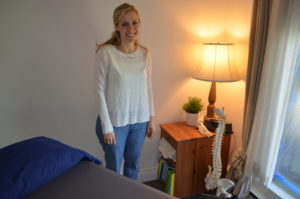 AH: I first became an Athletic Therapist because of my interest in the human body and seeing the benefits of treatment for my own injuries. During my internship I worked with three Athletic Therapists who received further training in Osteopathy. Working alongside these individuals, I discovered that while I was able to successfully treat patients using my athletic therapy training, the patients of my colleagues had a shorter recovery period and in the case of extreme injuries were more likely to return to pre injury function. The bottom line was that when my supervisor (with osteopathic training) by way of a simple technique could accomplish what would have taken me multiple sessions to do, I knew that I wanted to become an Osteopathic Manual Practitioner. It’s not that I saw Osteopathy as some sort of miracle practice, rather my colleagues exhibited a much more comprehensive understanding of the human body that allowed them to create and enact a much more comprehensive treatment plan than I was able to with my current training.
AH: I first became an Athletic Therapist because of my interest in the human body and seeing the benefits of treatment for my own injuries. During my internship I worked with three Athletic Therapists who received further training in Osteopathy. Working alongside these individuals, I discovered that while I was able to successfully treat patients using my athletic therapy training, the patients of my colleagues had a shorter recovery period and in the case of extreme injuries were more likely to return to pre injury function. The bottom line was that when my supervisor (with osteopathic training) by way of a simple technique could accomplish what would have taken me multiple sessions to do, I knew that I wanted to become an Osteopathic Manual Practitioner. It’s not that I saw Osteopathy as some sort of miracle practice, rather my colleagues exhibited a much more comprehensive understanding of the human body that allowed them to create and enact a much more comprehensive treatment plan than I was able to with my current training.
The additional skills these individuals had, coupled with their greater understanding of the entire body as a functioning unit, was able to shorten the recovery time and significantly speed up the rehabilitation process. For me, Osteopathy was not something to supplant my athletic therapy training, but supplement it; thus, making me a better all-around therapist who would be better equipped to look for the deeper roots of issues — allowing me to help patients avoid recurrent injuries and enjoy a more complete level of healing. These desires and interests led me to study Osteopathy.
WEHL: What inspired the name “Rhiza” for your practice?
AH: Rhiza is the Greek word for “root” and given that much of what we know about the body has Greek roots, it seemed fitting to use the word for “root” in a root language. I also wanted a name that people will ask about, which then allows me to share my passion of helping people to live non-restrictive lives, allowing our bodies to be able to do what you want them to do and live the lifestyle you enjoy.
My goal is to creatively find the root cause of what is going on in someone, what is decreasing energy levels or what is causing pain or discomfort. When we get to the root of what’s going on, homeostasis and balance are restored and the body is then able to maintain health in all the systems and the individual can return to better health than before the ailment. The example I give is if you have pain in your wrist but have a tourniquet on the forearm; if I only treat the wrist we haven’t restored the blood flow, the nerve is compressed and you will not be helped. It’s about restoring all the systems in the body to proper functioning by addressing each system and responding to the whole person versus a symptom.
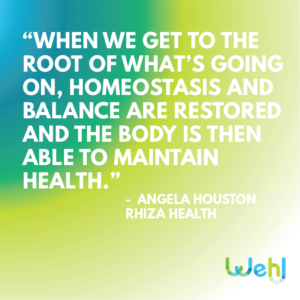 WEHL: Do you have any tips for someone who’s interested in trying Osteopathy?
WEHL: Do you have any tips for someone who’s interested in trying Osteopathy?
AH: In Canada, look for someone who has gone through a five-year program and done a thesis or trained in affiliated European schools. In Ontario you can look on this site to find a practitioner registered with the “Ontario Association of Manual Practitioners”.
Book an appointment with an Osteopathic Manual Practitioner for an assessment and they will show you how they can journey with you in achieving your goals and getting you back to wellness. All practitioners are different. Ask about their philosophies and how they treat and see how this lines up with what you are looking for.
What connections have you noticed between your physical and spiritual wellness? Has awareness in these areas helped you to get to the ‘root of the issue?’ Let us know in the comments section!
Connect with Angela and Rhiza Health:
- Web: rhizahealth.ca
- Wehl Platform: @ahouston
We invite you to join our all-in-one healthy lifestyle app at Wehl.com!


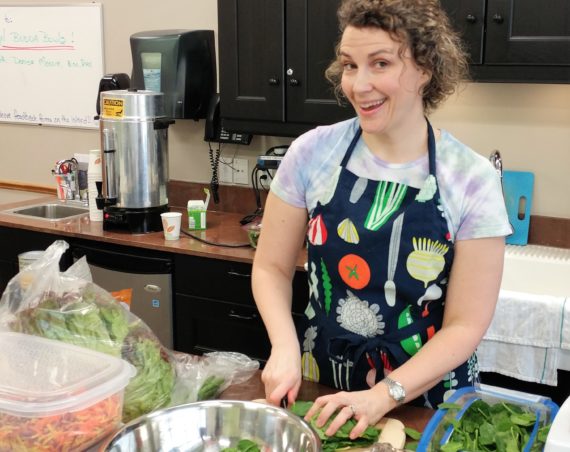
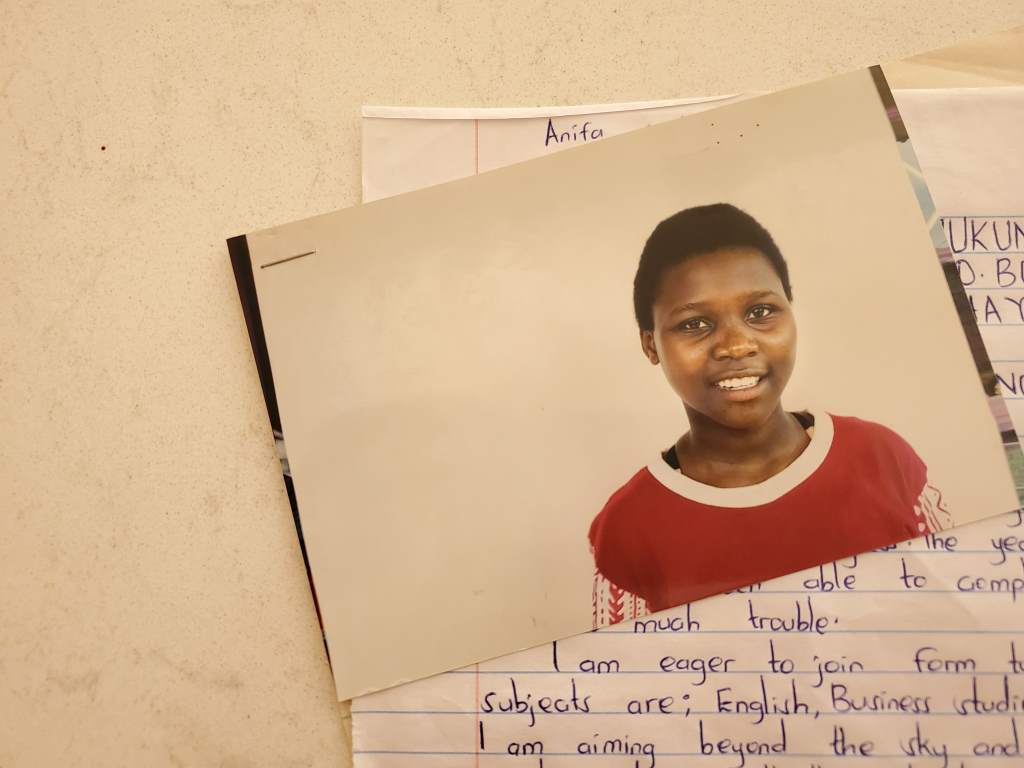
2 Comments
Dorothy Caldwell
For over a year, I have been taking my granddaughter to an osteopath, to treat her for strabismus. Until I read the interview, Angela, I had no idea about the physical and spiritual connection, and found it helpful to learn that the client is not a passive participant in the process of healing. It is truly inspiring to read that you are focused on getting to the root of the problem. Thanks, Allison, for sharing her story!
Allison
Thanks so much Dorothy – really appreciate your comments! I hope that your Granddaughter experiences improvements soon. I continue to be impressed at the variety of things that osteopathy can address.